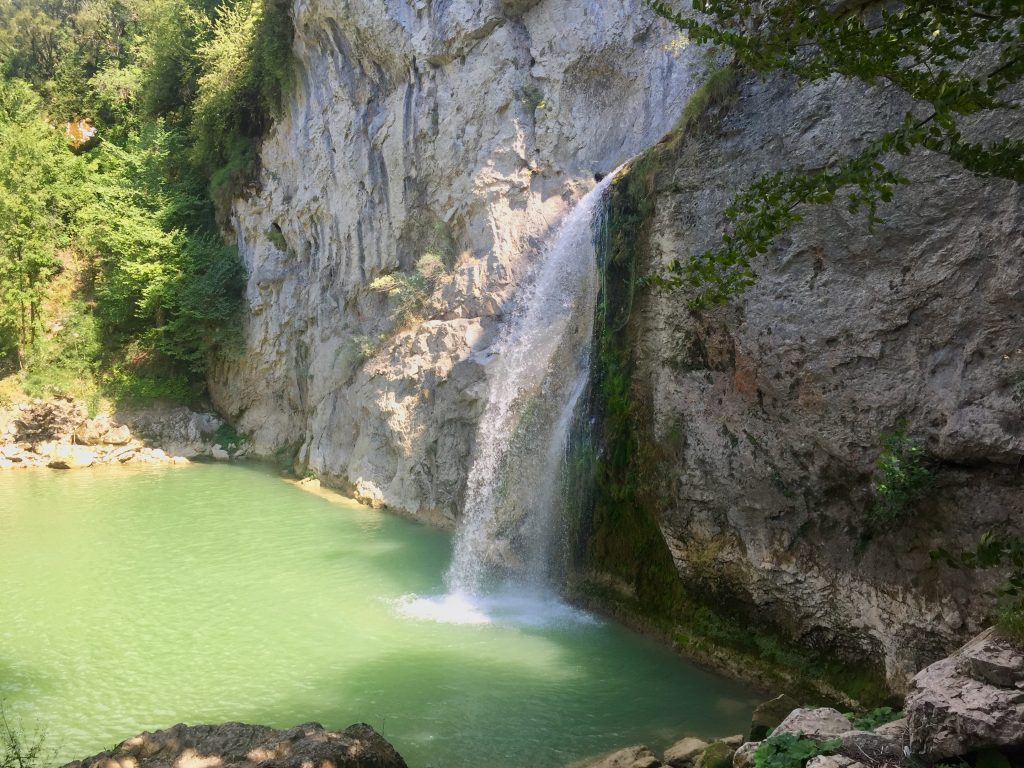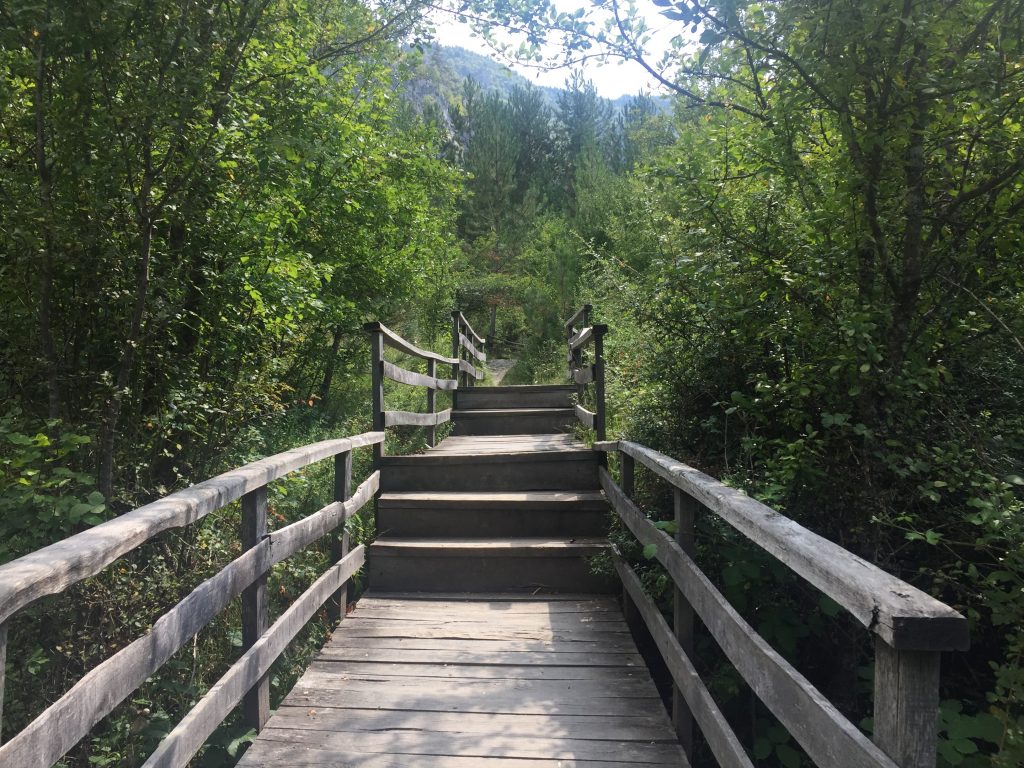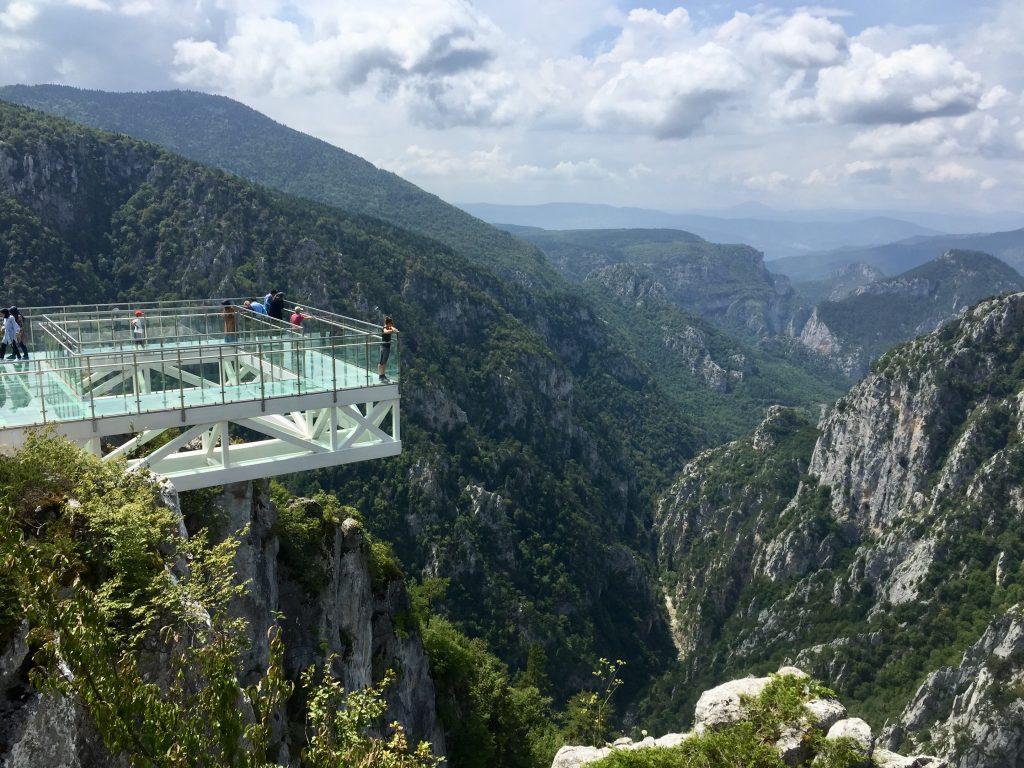The rarely visited Küre Mountains Region of the Kastamonu and Bartın provinces is a silent, forested land characterized by its system of canyons, caves, and rushing waters. Green throughout the summer, even the colors of the changing leaves come autumn are overshadowed by the vibrancy of the traditional clothes of local women. The mountain range itself spans the 300 kilometers from the Bartın River in the west to the Kızılırmak River in the east, mirroring the shape of the Black Sea coastline, while the national park of the same name covers a total of 378 km2. With a more ‘undiscovered’ feel than the now-popular eastern Black Sea highlands, the rich ecosystem and culture of the Küre Mountains make for a unique venture into a seemingly forgotten world.

My trip to the Küre Mountains was unplanned as always. Spending little more than one full day in Ankara after returning from the other side of the Atlantic, I began to feel an untimely but familiar itch to move, go, explore. Checking maps and flipping coins, in my jet-lagged state, I still couldn’t seem to decide where my next destination would be, but I could decide to just start driving. Sometimes the best decisions are made in motion, and this was definitely one of them. The fresh, dewy air and cool forests snapped me out of my uncertainty, and the region prompted yet another wonderful week in my van. If you aren’t part of the secret club of privileged camper-van owners, there are hotels in the nearby cities of Azdavay, Pınarbaşı, Şenpazar, and Kastamonu itself, and some family-owned guesthouses in smaller villages. Since public transport and infrastructure is lacking in the area, this trip will be at its most enjoyable for those with cars (rented or otherwise). Like almost everywhere in Turkey, there’s no shortage of markets and simple restaurants along the way. If you are thinking of camping, my best recommendation would be to head up to Suğla Yaylası, the summer grazing area turned motorsports arena (really), just outside of Azdavay, where you can set up your tent in peace and use the water and newly built bathrooms. While an extensive network of marked trails was developed within the national park, the trails are unmaintained, overgrown and nearly impossible to follow. The best way to experience the region is good old sightseeing.
My trip to the Küre Mountains was unplanned as always. Spending little more than one full day in Ankara after returning from the other side of the Atlantic, I began to feel an untimely but familiar itch to move, go, explore. Checking maps and flipping coins, in my jet-lagged state, I still couldn’t seem to decide where my next destination would be, but I could decide to just start driving. Sometimes the best decisions are made in motion, and thiw was definitely one of them. The fresh, dewy air and cool forests snapped me out of my unncertainty, and the region prompted yet another wonderful week in my van. If you aren’t part of the secret club of priviliged camper-van owners, there are hotels in the narby

Before heading into the depths of the national park itself, a stop in the village Yörük Köyü is in order. Just outside of famous Safranbolu, whose once pretty streets are now overly renovated copies of their former selves, sits the real thing. Yörük Köyü has all of the cuter than cute, antique wooden houses and Instagram-worthy cobblestone streets without the touristic oppression (sorry Safranbolu fans). Take countless pictures, tour the old houses, and grab a quick snack in one of the flowery cafes while the local villagers sit chatting on the street, work in their gardens, and just go about their everyday lives.

Horma Canyon, with mosses and ferns dangling from its water-cut stone walls, the whole canyon seems to be enveloped in a tropical mist rising from the blue-green stream snaking through the crevices below. The tamer of the canyons in the region, it’s possible to canyon through it, down over its seven waterfalls, in just one day. Sane travelers can walk from one end to the other over the newly built wooden walkway, just three kilometers in total. Starting from the entrance closest to Pınarbaşı, the walkway leads all the way to the Ilıca Waterfall, near the village of the same name. At Ilıca, in an act of giddy juvenile pleasure, I of course ignored the ‘No Swimming’ signs and tried my best to get as close to the invigoratingly high-pressured shower rushing out of the canyon from 28 meters above… But maybe just snapping a quick picture is the rational way to go.

As a region known for its canyons AND its caves, the most famous of the latter is probably the Ilgarini Cave, near the village of Sümenler. Dubbed the ‘forth biggest cave in the world’ (I’m sure we’ve all been in Turkey long enough to have heard a similar dubious claim) the 858 meter long Ilgarini Cave is said to contain artifacts indicating its use during the Roman and Byzantine periods. You can reach the entrance to the cave by following a narrow path up and through the forest for about 500 meters, when the path comes to an end, you’ll know your close. I myself didn’t actually go inside. Fresh after hearing a story of someone stepping into a cave and consequently onto a sleeping bear from my caver friend, and with no further knowledge of the Ilgarini Cave at the time, I decided that the narrow entrance looked too scary and didn’t provide enough room for a quick escape if necessary.
The biggest and baddest of the canyons is Valla Canyon. The start of 16 kilometers of its deep ravine is visible from an observation deck 728 meters high. Starting from the village of Muratbaşı, a 1 km tranquil walk on forest path does little to prepare you for the formidable canyon. Said to reach a depth of up to 1300 meters, at times the sunlight is barely visible from the bottom. While passing through the canyon itself is quite dangerous and can take upwards of 4-5 days, viewing it from above is exciting, without the life-threatening part.

The list of canyons in the area is seemingly endless, but the last one I had the chance to visit is Çatak Canyon, popular thanks to its glass-bottomed observation deck. Take off your shoes in peculiar Turkish fashion to experience the chasm of nothingness between your feet and the bottom of this deep canyon. It can be accessed via a kilometer or two of dirt road just outside of Kayabaşı Village. The entry fee to use the glass deck is something like 5 or 6 TL, and definitely worth it, excluding acrophobia sufferers.

From Çatak Canyon, it’s just a short drive to the town of Azdavay. With a population of just 2700, the small town of Azdavay is nearly surrounded by forested mountains which would have been difficult to pass before the creation of modern roads. This fact is echoed in the preservation of traditional culture, and most notably, traditional dress. Many of the local women still wear copious layers of clothing and headdresses of rich color, pattern, shine, and detail. Actually common throughout the region, there’s no better place to experience the bright purples, yellows, and greens than the farmer’s market in Azdavay. Girls in jeans and T-shirts heckle next to the glittering costumes of their superiors, with no one seeming to pay any special attention to either.

The Küre Mountains harbor a hidden world with a mix of culture and nature just perfect for a novel vacation. Quiet and nearly devoid of typical tourists, not to mention in close proximity of both Istanbul and Ankara, the national park offers adventure for those seeking it, and relaxation for those not. Holidays on the beach are always great, but I think we all just need to get lost in the forest once in a while.
All photos are courtesy of the author.









